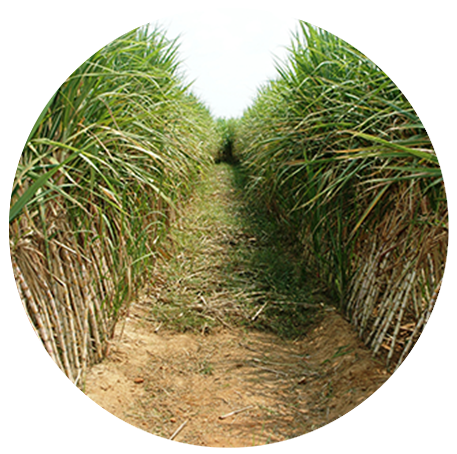Plant-based Plastic (PLA)
Our obsession with PLA
Did you know that around 26% of the 311 million tonnes of plastic produced every year is used as plastic packaging?1 Most plastic doesn’t get recycled either (only 14% does) so it keeps ending up in places where it shouldn’t. Like the 8 million tonnes of plastic that finds its way into our oceans every year – that’s like dumping the contents of a garbage truck into the ocean every minute!
Sadly, most standard (petroleum-based plastic) coffee capsules fall into these mammoth statistics. The Green Ring coffee capsules, however, are unique because they are made solely from plant-based plastics (polylactic acids), or if you’re lazy like us, PLA’s.
1 All statistics taken from Ellen Macarthur Foundation: The New Plastics Economy
Is PLA in anyway bad for me?
A plant-based plastic is made from completely renewable resources. In our case this is sugar that comes from sugarcane and sugar beet. This means that compared to conventional coffee caps, PLA saves fossil resources and requires a lot less energy to produce. As well as this, PLA contributes positively to the swelling problem of plastic consumption and waste. Because over time the PLA will decompose and leave behind nothing but natural bi-products, which can safely re-enter the carbon cycle.Our coffee capsules do not pose any risk to your health, because there are absolutely no toxic chemicals associated with PLA. The Green Ring caps have also been designed to support the high temperatures of an espresso machine, so don’t worry about that either. But don’t just take our word for it. The USDA gave us the nod and approved that our capsules contain nothing but safe ingredients for food packaging.
The lifecycle of a plant-based coffee capsule
The Green Ring coffee caps that you run through your machine every morning are actually grown in Thailand. Perhaps that sounds a little strange, but it’s simple really. Our suppliers grow the sugar plants that are used to form the PLA in a plantation in Thailand. The sugar is collected and converted into PLA by a company called Corbion. This works through a process called microbial fermentation. The PLA is made into pellets, and is then ready to be moulded into a coffee cap. They are then filled with one of our coffee blends, packaged in sustainably sourced packaging, and with a little bit of luck, bought buy a coffee lover.
After you’re finished with the capsule, it’s thrown in the organic waste bin and enters into the composting cycle. The capsule is broken down into CO2, water and biomass / compost, which is then used to fertilise plants. In that sense, the lifecycle of one of our coffee capsules is circular: it starts life in a field, and ends in one too.
Forget about Cradle-to-Cradle, check out our “field-to-field” lifecycle in the diagram below!
Educate yourself on Corbion’s PLA processes here (be warned, it’s pretty dense stuff).
Will sugar grown for PLA compete with sugar grown for food?
The sugarcane and sugar beet grown for plant-based plastics does not conflict with the food chain for humans. The surface area used for today’s bio-plastic production is under 0.01% of the global agricultural farming area. If you’re having trouble imagining that, it’s roughly the same as placing an average size coffee bean next to the Eiffel Tower.
Land use for bio-plastics in 2012 and prediction for 2017

Deforestation and GMO’s
The PLA used in our capsules comes from sources with Bonsucro certification. This standard prevents the cultivation of sugarcane in areas of high conservation value (HCV) or areas that are legally protected. Our supplier, who is based in Thailand, grows sugarcane and sugar beet that are completely GMO free. And this won’t be changing any time soon because GMOs are actually illegal to grow in Thailand.
Find out more about Bonsucro Certification here

